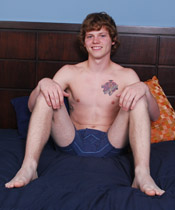Flexuality
On the Prowl
Alli-berri: Homoflexible? Absolutely. People who might consider themselves homoflexible are likely to score out on the test as queer or polyamorous. When I designed the test, I concentrated more on teasing out flexible potential in the 90% who consider themselves straight but really have bisexual potential. I wasn't trying to make the profiles absolutely symmetric along some gradient of sexuality. I assume that those who identify as gay have probably done so because their desires are strong enough and unilateral enough to stand up to social stigma.
AD: Interesting about China, and your point about other cultures (and other times) is correct. The idea that people are either gay or straight is only about a century old and not accepted around the world, though the concept (for better or worse) is catching on elsewhere. I find this most evident in South Asian, where rates of homosexual behavior among men is as high as 20-50%, depending on the study, but everyone gets married and almost none think of themselves as gay or bisexual in Western terms.
AD: Interesting about China, and your point about other cultures (and other times) is correct. The idea that people are either gay or straight is only about a century old and not accepted around the world, though the concept (for better or worse) is catching on elsewhere. I find this most evident in South Asian, where rates of homosexual behavior among men is as high as 20-50%, depending on the study, but everyone gets married and almost none think of themselves as gay or bisexual in Western terms.




















